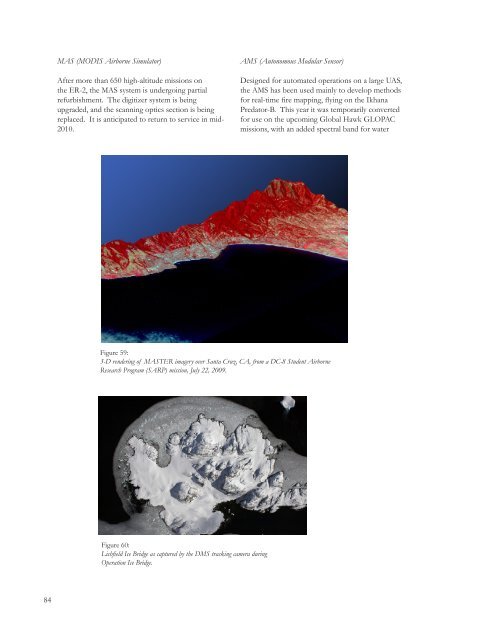2009 Annual Report - NASA Airborne Science Program
2009 Annual Report - NASA Airborne Science Program
2009 Annual Report - NASA Airborne Science Program
You also want an ePaper? Increase the reach of your titles
YUMPU automatically turns print PDFs into web optimized ePapers that Google loves.
MAS (MODIS <strong>Airborne</strong> Simulator)<br />
After more than 650 high-altitude missions on<br />
the ER-2, the MAS system is undergoing partial<br />
refurbishment. The digitizer system is being<br />
upgraded, and the scanning optics section is being<br />
replaced. It is anticipated to return to service in mid-<br />
2010.<br />
AMS (Autonomous Modular Sensor)<br />
Designed for automated operations on a large UAS,<br />
the AMS has been used mainly to develop methods<br />
for real-time fire mapping, flying on the Ikhana<br />
Predator-B. This year it was temporarily converted<br />
for use on the upcoming Global Hawk GLOPAC<br />
missions, with an added spectral band for water<br />
Figure 59:<br />
3-D rendering of MASTER imagery over Santa Cruz, CA, from a DC-8 Student <strong>Airborne</strong><br />
Research <strong>Program</strong> (SARP) mission, July 22, <strong>2009</strong>.<br />
Figure 60:<br />
Lichfield Ice Bridge as captured by the DMS tracking camera during<br />
Operation Ice Bridge.<br />
84











